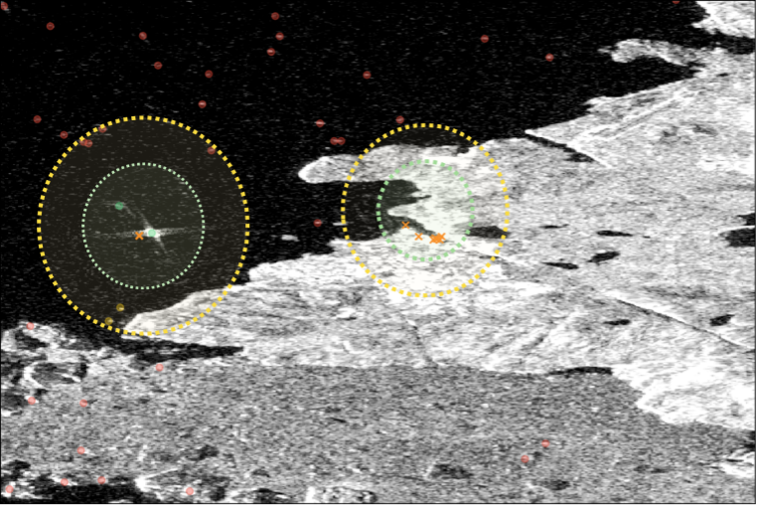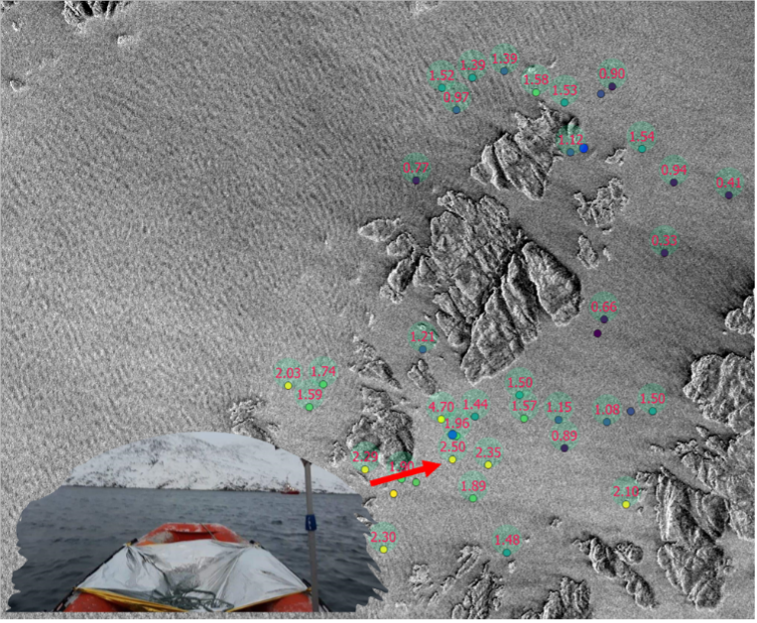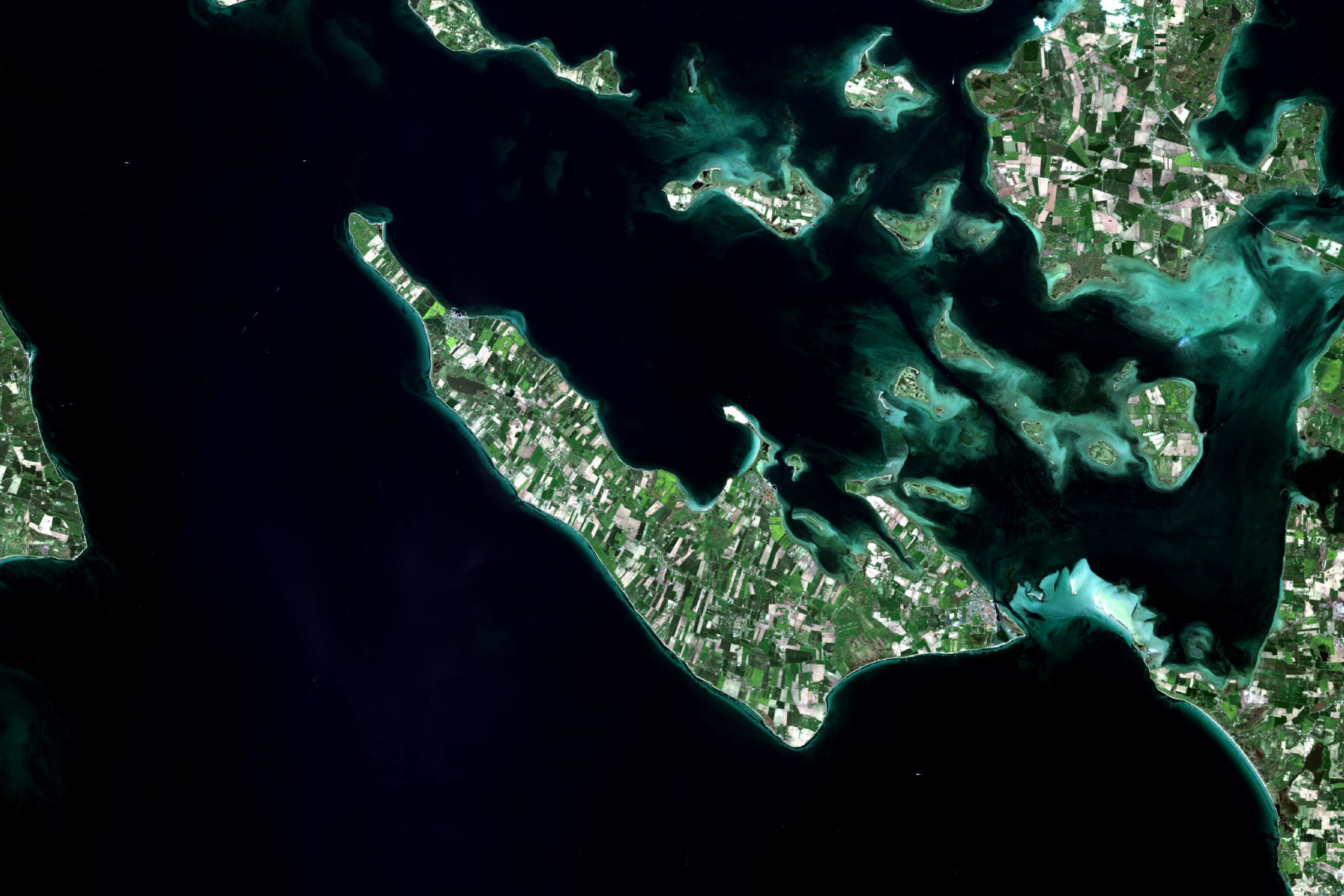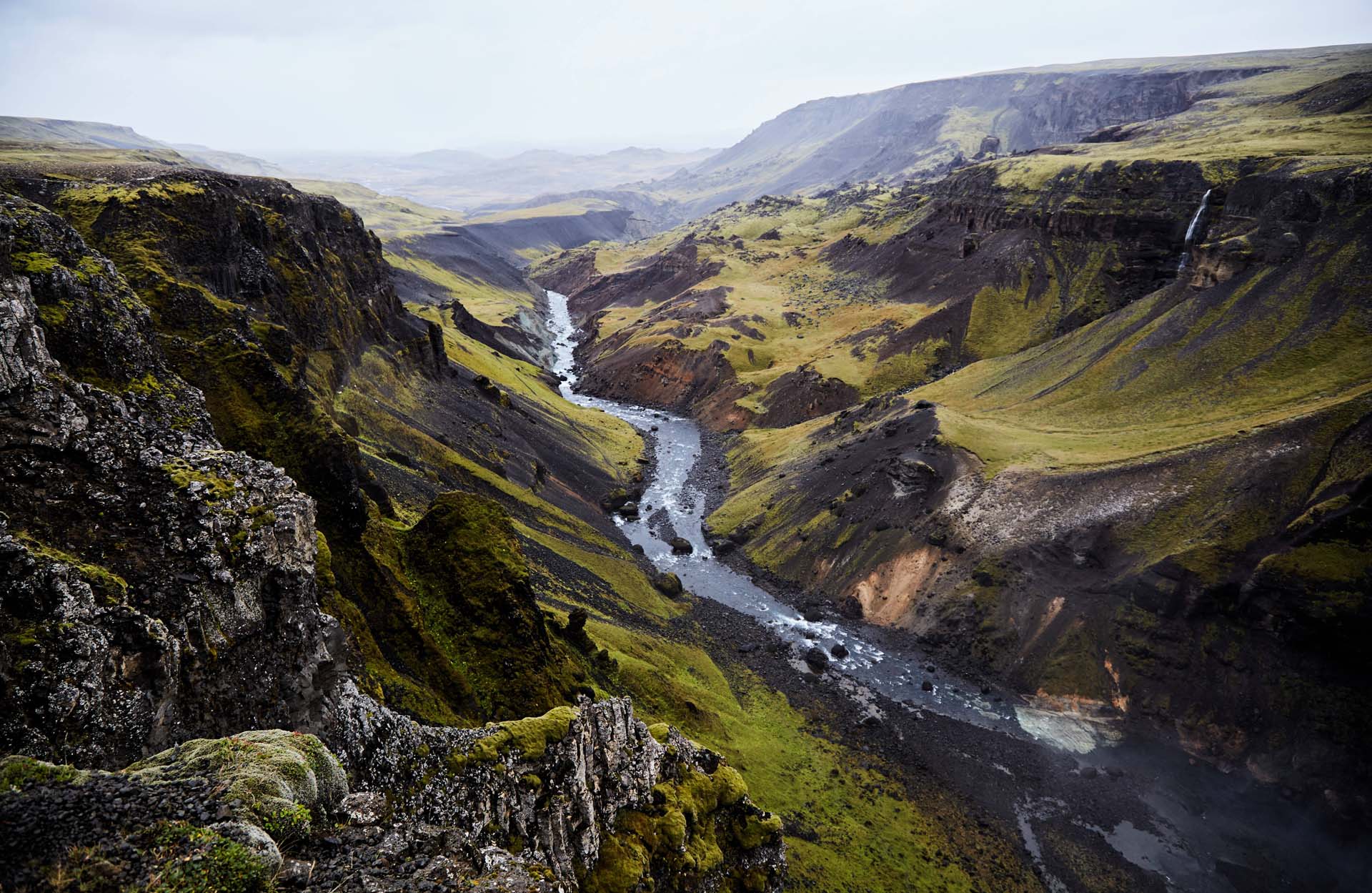
SAR4SAR - Enhancing Arctic Search and Rescue operations using radar satellite imagery
Exploring new paths to enhance radar satellite-based object detection for Search-and-Rescue operations in the Arctic.
Why is it important?
Maritime activity across the Arctic is increasing together with increased economic activity and geopolitical awareness in the region. The increased traffic is mainly due to fishing, bulk carrier traffic, mineral exploration activities, cruise tourism but also an increasing need for sovereignty enforcement capabilities. Adding to this, local traffic, of which smaller fishing vessels, recreational boating, and local tourist operators are the main purposes.
Consequently, supporting safety at sea, safeguarding national sovereignty as well as offering support to the civil society, efficient and capable naval and first responding capacities are being important as ever before to Arctic societies and nations. As examples of this, in Greenland alone, every year more than 50 search-and-rescue operations take place, where smaller boats and dinghies (dark-vessels) are involved.
Also, cruise tourism in the Arctic is expected, post-COVID-19, to attract even more tourists. These cruise ships often carry well over 500 passengers and in the event of an emergency situation where life rafts have to be used, there will be a pronounced need to provide an overview of the positions of these rafts, as they can quickly spread over large areas, due to rough environmental conditions.
All in all, the increased Arctic maritime traffic constitutes an increasing safety risk element, which is why increased capabilities concerning the location of small maritime objects and dark-vessel detection are required.
Project highlights:
Exploring how Danish companies within the marine, security and defense sectors can contribute with solutions increasing the visibility of small maritime objects in radar satellite images.
Feasibility live tests of equipment and tech solutions under Arctic conditions, securing Arctic-fit solutions.
Bridging scientific and industry knowledge and experience, safeguarding scientific and industry excellence and requirements.
In more detail..
Maritime activity across the Arctic is increasing together with increased economic activity and geopolitical awareness in the region. Supporting safety at sea, safeguarding national sovereignty as well as offering support to the civil society, efficient and capable naval and first responding capacities are being important as ever before to Arctic societies and nations and a clear need for enhanced navigational situational awareness exists.
Adding to this, communication opportunities in the Arctic are often limited outside the populated areas, due to vast distances and lack of communication infrastructure. In the case of dark-vessel-detection, e.g. for search-and-rescue operations, navies and first responders often have to search vast areas with little opportunity to efficiently identify the exact location of those in need in the often harsh environmental conditions.
Satellite-based decision support allows among other things efficient object identification within large areas. However, satellite-based object identification in the Arctic is challenged by a number of factors, including cloud cover, limited sunlight much of the year as well as large geographical areas, and widespread lack of up-to-date coastal information. SAR (Synthetic Aperture Radar) based sensors utilize microwave reflection against a given surface and can thus operate independently of cloud cover and light conditions, which is why SAR-based satellite data is particularly suitable under Arctic conditions.
The challenge of object identification in connection with search-and-rescue operations using SAR satellite data is that publicly available, e.g., Sentinel 1 from the European Space Agency (ESA), does not offer a sufficiently high spatial resolution to determine objects smaller than about 20m. In addition, the temporal resolution is also too low (3-5 days return visit time) to provide near-real-time data.
Due to recent and substantial expansion in commercial satellite constellation capabilities, it is possible to obtain high temporal and spatial resolution radar satellite data. However, detecting small maritime objects and dark vessels remains a challenging task and therefore SAR4SAR will explore how these challenges can be overcome by combining research and industry knowledge and tested in a live environment.
Center for Defence, Space & Security:
The Center for Defence, Space & Security (CenSec) is the prime Danish cluster for small and medium-sized enterprises specializing in high tech industries like defence, homeland security, space, aerospace, railway and maritime.
CenSec was founded in 2004 and established in 2007 as an industrial cluster. In 2018, CenSec was approved by the Danish Ministry of Higher Education and Science to also become a national Innovation Network for Security (Inno-Sec)
Related items
NANOK – Nautical Navigation Operational Knowledge
Large scale mapping of submerged rocks, intertidal zones and accurate delineation of coastlines across the Arctic region.
Global Seas
Delivering earth observation enriched high-quality metocean data to enhance fuel efficiency in the shipping industry. . . .
EOatDHI part of the DHI GROUP
gras@dhigroup.com
+45 4516 9100
Agern Alle 5,
2970 Hørsholm,
Denmark
CVR: 36466871












